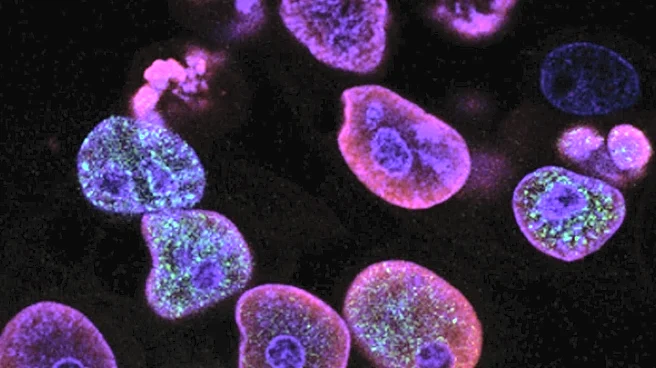What's Happening?
A recent study conducted by the Pediatric Epilepsy Center of Peking University First Hospital has identified plasma extracellular vesicles-derived microRNAs as potential biomarkers for distinguishing between
focal cortical dysplasia (FCD) types I and II. The research involved patients with drug-resistant epilepsy who underwent surgical treatment. The study focused on the pathological categorization of FCD, identifying dysmorphic neurons with severe cytologic abnormalities. Blood samples were collected and analyzed to isolate and purify plasma extracellular vesicles (EVs), which were then examined for microRNA content. The study found significant differences in the surgical prognosis between FCD types I and II, with microRNAs providing a stable environment for potential biomarker identification.
Why It's Important?
The identification of microRNAs as biomarkers for FCD types I and II is significant as it offers a new avenue for diagnosing and differentiating between these epilepsy-related conditions. This development could lead to more targeted and effective treatment strategies for patients with drug-resistant epilepsy. By providing a clearer understanding of the pathological differences between FCD types, the study enhances the potential for personalized medicine approaches, improving surgical outcomes and reducing recurrence rates. The research also underscores the importance of microRNAs in gene expression regulation, highlighting their role in medical diagnostics.
What's Next?
Future research may focus on further validating these findings in larger patient cohorts and exploring the clinical application of microRNA-based diagnostics in epilepsy treatment. The study's results could prompt additional investigations into the role of microRNAs in other neurological disorders, potentially leading to broader applications in medical diagnostics and therapeutics. Collaboration between research institutions and clinical centers may be necessary to advance these findings into practical medical solutions.
Beyond the Headlines
The study's findings could have broader implications for the field of neurology, particularly in understanding the molecular mechanisms underlying epilepsy and other neurological disorders. The use of microRNAs as biomarkers may also influence the development of non-invasive diagnostic tools, reducing the need for more invasive procedures. Additionally, the research highlights the potential for extracellular vesicles to serve as carriers of diagnostic information, opening new research pathways in cellular communication and disease pathology.











